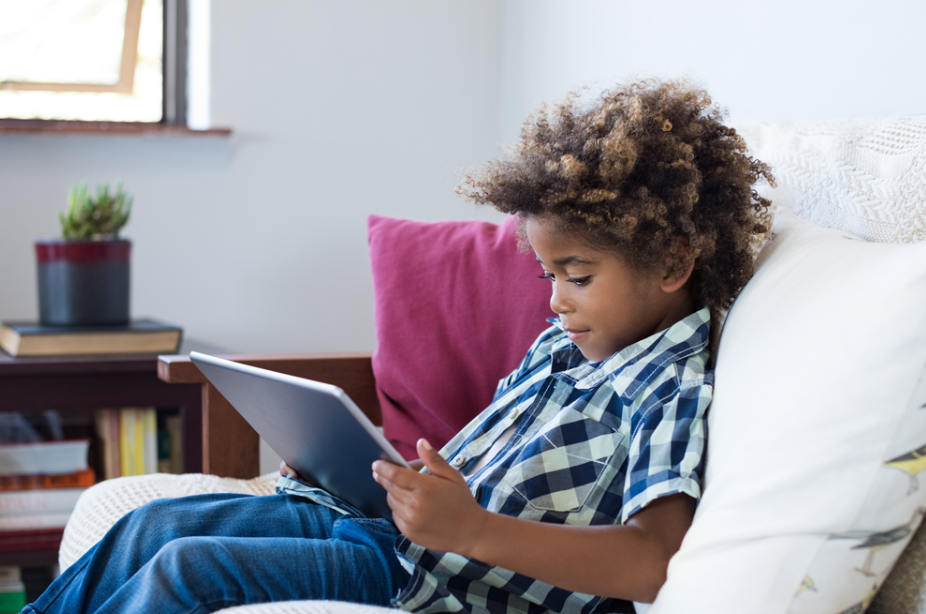Children in the current generation have more screen time than any other. While we should all limit our screen time, children are the most vulnerable and need direction.
Although there are many reasons to limit a child’s screen time, there is one that is more important than many parents realize. The amount of screen time your child gets directly affects their vision.

Children are in front of screens throughout their day. Work, school, and entertainment all lead to too much screen time for most children. Learning how screen time affects a child’s vision is essential for parents.
It is also critical children see an eye doctor for yearly exams. A directory website can help parents find the best doctor for their child’s vision health.
Eye Issues Caused by Unrestricted Screen Time
Multiple eye conditions can result from excessive screen time. Eye doctors urge parents to take action and limit their child’s screen time to healthy amounts. The following are some eye conditions caused by too much screen time.
Asthenopia
Asthenopia is a condition caused by marked eye fatigue. Symptoms of this condition include dimmed vision, eye discomfort, and headaches.
Children can become engrossed in screen time activities and may not realize they are putting their eyes in danger. They need to be reminded to take breaks often because they can lose track of time.
Decreased Focus Flexibility
Although short-lived, children who have been using a cell phone, tablet, or computer for long periods may find it difficult to adjust their eyes to distance vision.
While this goes away after screen time ceases, its occurrence means a child has been on their device too long. The child’s eyes will eventually adjust to normal function.
Dry Eyes & Irritation
One of the most common eye conditions resulting from excessive screen time is dry eyes and irritation. When children are looking at a screen, they blink much less. The lack of blinking prevents tear protection.
Dry eye and irritation worsen when children are looking at a screen above their heads. Without a tear film on the eyes, they become dry and irritated.
Myopia
Many parents become shocked to learn too much screen time can damage their child’s vision and cause them to develop nearsightedness. Children need exposure to natural sunlight for normal eye development.
Unfortunately, children do not play outside as much as they did twenty years ago. They have access to television, video games, cell phones, and computers, prompting them to stay indoors more.
Children who spend more time indoors are likely to develop myopia. Over the last 30 years, the rates of childhood myopia have skyrocketed.
Screen Time Affects More Than Your Child’s Eyes
Your child’s eyes are not the only thing affected by too much screen time. Spending too much time on screens can also affect their circadian rhythm.
The blue light emitting from screens tricks the body into thinking it is daytime. The resulting shifts in circadian rhythm can cause sleep difficulties.
Parents should consider limiting screen time, especially two hours before bedtime. There are also ways to minimize the negative effects of screen time on your child’s eyes.
Practice Safe Screen Time
It would be difficult or even impossible to remove screen time completely from a child’s life. Because screened devices are such an integral part of most families’ lives, there are some hints that make them safer.
Computer glasses
To filter out the blue light from computer screens, tablets, and smartphones that can cause eyestrain, headaches, and fatigue, computer glasses are essential eyewear.
Distance
Children should position their screens at least an arm’s length away. Screens should also be positioned where a child needs to look down instead of up.
Size
Increasing the size of screens is also beneficial. The smaller and closer the screen to a child’s face, the greater the eye strain. Limit cell phone time because the screens are so tiny.
Understanding the 20-20-20-2 Rule
Many kids would spend all their time looking at a screen if parents did not get involved. While screen time can be educational and fun, it can also be damaging when out of control.
When focusing on any near task, which includes reading or screen time, practice the 20-20-20-2 rule.
Encourage your child to break their focus every 20 minutes and focus on an object 20 feet away for 20 seconds. Your child should blink 20 times, and then they can return their focus to the screen.
The 2 stands for at least two hours of outdoor play to stimulate natural eye development. Encouraging your child to play outdoors for a couple of hours a day can protect them against myopia development.
Schedule an Eye Exam
Your child needs a yearly eye exam to protect their vision and ensure no developmental issues are occurring. Schedule your child’s comprehensive eye exam today and ensure your child’s vision is protected.



